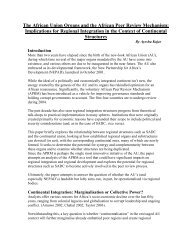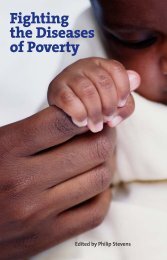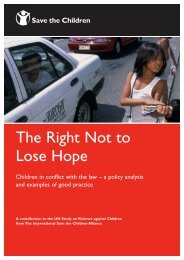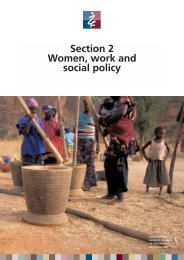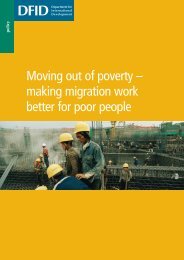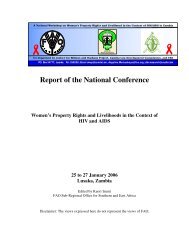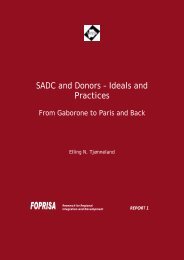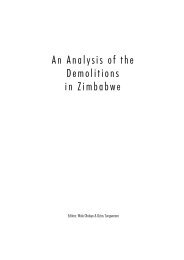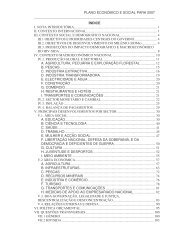Justice Sector and the Rule of Law - AfriMAP
Justice Sector and the Rule of Law - AfriMAP
Justice Sector and the Rule of Law - AfriMAP
You also want an ePaper? Increase the reach of your titles
YUMPU automatically turns print PDFs into web optimized ePapers that Google loves.
limit its effectiveness in protecting human rights. 573 It is also not clear whe<strong>the</strong>r <strong>the</strong> courts wouldbe willing to enforce <strong>the</strong> recommendations <strong>of</strong> <strong>the</strong> commission since <strong>the</strong>y refused to do so inrelation to <strong>the</strong> determinations <strong>of</strong> <strong>the</strong> ombudsman in <strong>the</strong> case <strong>of</strong> Munthali v Malawi Institute <strong>of</strong>Education. 574Most Malawians cannot access <strong>the</strong> formal state mechanisms for resolving civil disputes.Consequently, <strong>the</strong>y use non-state institutions <strong>and</strong> processes in what is known as <strong>the</strong> ‘informal’or ‘primary’ justice sector. A ‘rapid assessment’ by <strong>the</strong> British Department for InternationalDevelopment (DFID) MASSAJ Primary <strong>Justice</strong> Pilot Project confirmed that most people dependon non-state institutions, <strong>of</strong> which <strong>the</strong> most frequently used were found to be traditional familycounsellors (ankhoswe), traditional leaders, religious leaders <strong>and</strong> community, non-governmental<strong>and</strong> faith-based organisations. 575 The most common types <strong>of</strong> disputes dealt with in <strong>the</strong>se forainvolved l<strong>and</strong>, chieftaincy, marriage <strong>and</strong> domestic violence. 576Although <strong>the</strong> Constitution recognises customary law as part <strong>of</strong> <strong>the</strong> law <strong>of</strong> Malawi (see above,Chapter 1, section B), <strong>the</strong> customary law regime consists in general <strong>of</strong> rules <strong>of</strong> conduct <strong>and</strong>institutions for <strong>the</strong>ir enforcement which are structurally <strong>and</strong> operationally independent <strong>of</strong> <strong>the</strong>institutional framework established by <strong>the</strong> Constitution. Although <strong>the</strong>y share certain basic characteristics,customary laws vary across population groups in <strong>the</strong> country. The last comprehensivesurvey <strong>of</strong> customary law applicable to Malawi was conducted in <strong>the</strong> 1970s. 577It is likely that that <strong>the</strong> vast majority <strong>of</strong> civil disputes in Malawi are processed by customaryjustice fora presided over by traditional leaders. 578 It has been estimated that <strong>the</strong>re are at least 24000 such fora, which operate in almost every village. 579 Most communities in Malawi, particularlythose in rural areas, recognise various levels <strong>of</strong> traditional leadership, including village headmen<strong>and</strong> women, group village headmen <strong>and</strong> women <strong>and</strong> senior ‘traditional authorities’ (chosenaccording to customary rules, but recognised by <strong>the</strong> president under <strong>the</strong> 1967 Chiefs Act). 580Traditional authorities, also known as chiefs, are not only physically <strong>and</strong> financially accessible,but are also experienced in <strong>the</strong> customary law <strong>of</strong> <strong>the</strong> people <strong>and</strong> readily available. They also




